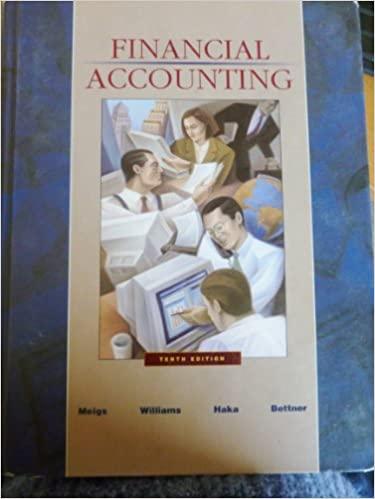Answered step by step
Verified Expert Solution
Question
1 Approved Answer
case problem ans writing assigment. question: 1. Facts 2. Issuea 3. Holding 4. Rational 1. Asiana flight 214 crash-landed at San Francisco airport on July
case problem ans writing assigment.
question:
1. Facts
2. Issuea
3. Holding
4. Rational
1. Asiana flight 214 crash-landed at San Francisco airport on July 6,
2013. Three girls from China were killed and 182 people were injured,
some seriously. The flight was carrying 141 Chinese, 77 South
Koreans, 64 Americans, three Canadians, three Indians, one
Japanese, one Vietnamese, and one person from France. The
Montreal Convention is an international treaty that governs
compensation to airline passengers. It offers international
passengers five options for where to sue: where they live, their final
destination, where the ticket was issued, where the air carrier is
based, and the air carriers principal place of business. Under the
treaty U.S. citizens will probably be able to sue in the United States.
Passengers that are not U.S. citizens will probably have to file their
claims in Asia and elsewhere, where lawsuits are rarer, more difficult
to win, and provide smaller recoveries. Asiana can try to use the U.S.
legal doctrine of forum non conveniens to argue that the Asian
victims cases should be tried in Asia because all parties are based
there. In U.S. courts, it is common to receive $5 to $10 million for the
death of a child, close to $10 million for becoming a quadriplegic, and
$1 million for breaking bones. By comparison, in another case a
South Korean court ordered an airline to pay a total of $510,000 to a
woman for the deaths of her daughter, son-in-law, and three
grandsons. A South Korean attorney who has represented crash
victims said that family members who sued in the United States
settled for as much as 100 times more than those who sued in South
Korea. A South Korean government agency expects Asianas
insurers to pay out about $175.5 million total$131 million to replace
the plane and another $44.5 million to passengers and the city of San
Francisco for damage to the airport. Why do the judgments vary so
much depending on where the suit is filed? Is this just? Why or why
not? [See Courts Will Treat Asiana Passengers Differently, USA
2013. Three girls from China were killed and 182 people were injured,
some seriously. The flight was carrying 141 Chinese, 77 South
Koreans, 64 Americans, three Canadians, three Indians, one
Japanese, one Vietnamese, and one person from France. The
Montreal Convention is an international treaty that governs
compensation to airline passengers. It offers international
passengers five options for where to sue: where they live, their final
destination, where the ticket was issued, where the air carrier is
based, and the air carriers principal place of business. Under the
treaty U.S. citizens will probably be able to sue in the United States.
Passengers that are not U.S. citizens will probably have to file their
claims in Asia and elsewhere, where lawsuits are rarer, more difficult
to win, and provide smaller recoveries. Asiana can try to use the U.S.
legal doctrine of forum non conveniens to argue that the Asian
victims cases should be tried in Asia because all parties are based
there. In U.S. courts, it is common to receive $5 to $10 million for the
death of a child, close to $10 million for becoming a quadriplegic, and
$1 million for breaking bones. By comparison, in another case a
South Korean court ordered an airline to pay a total of $510,000 to a
woman for the deaths of her daughter, son-in-law, and three
grandsons. A South Korean attorney who has represented crash
victims said that family members who sued in the United States
settled for as much as 100 times more than those who sued in South
Korea. A South Korean government agency expects Asianas
insurers to pay out about $175.5 million total$131 million to replace
the plane and another $44.5 million to passengers and the city of San
Francisco for damage to the airport. Why do the judgments vary so
much depending on where the suit is filed? Is this just? Why or why
not? [See Courts Will Treat Asiana Passengers Differently, USA
this is the sample case 

Step by Step Solution
There are 3 Steps involved in it
Step: 1

Get Instant Access to Expert-Tailored Solutions
See step-by-step solutions with expert insights and AI powered tools for academic success
Step: 2

Step: 3

Ace Your Homework with AI
Get the answers you need in no time with our AI-driven, step-by-step assistance
Get Started


